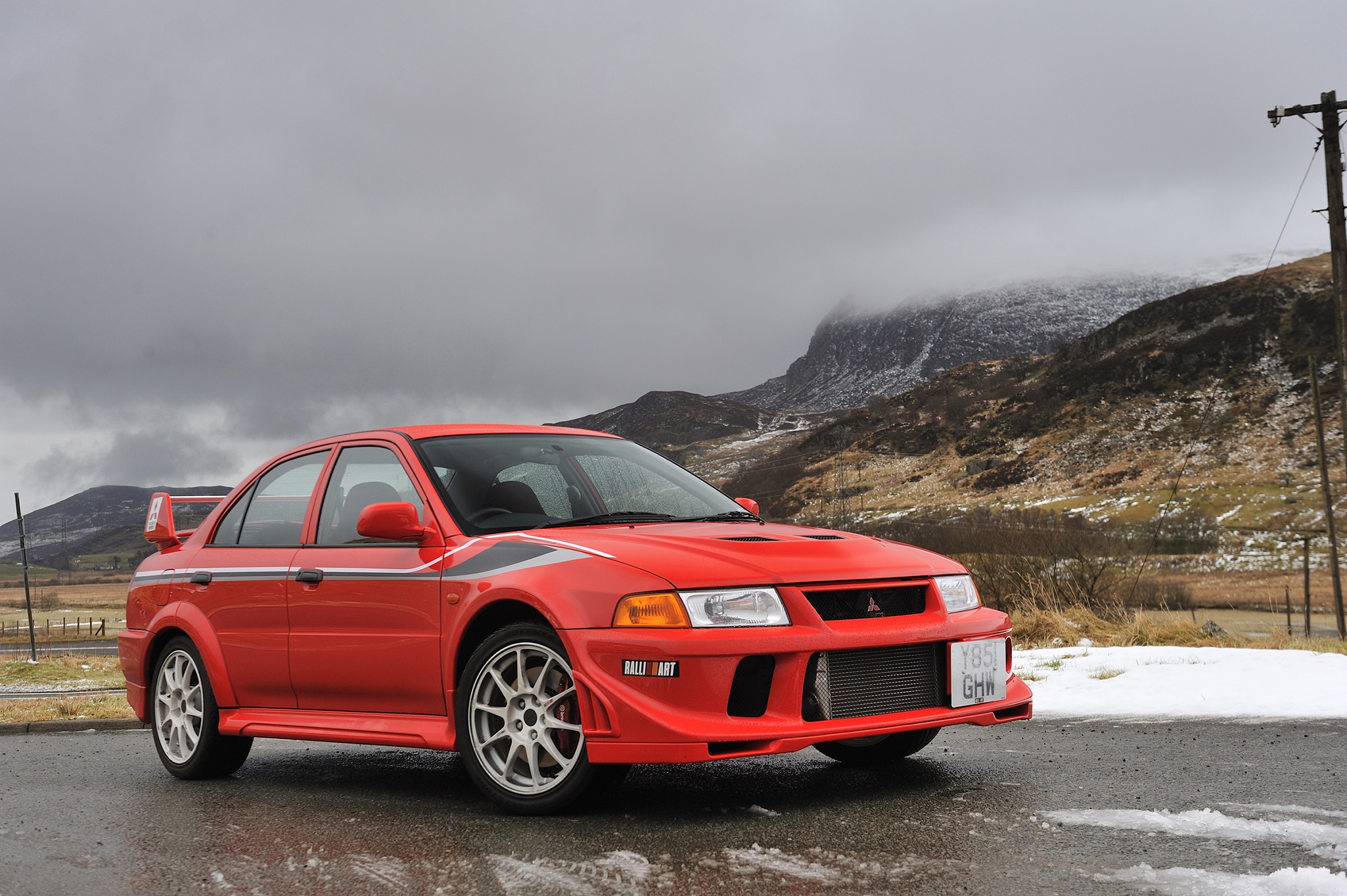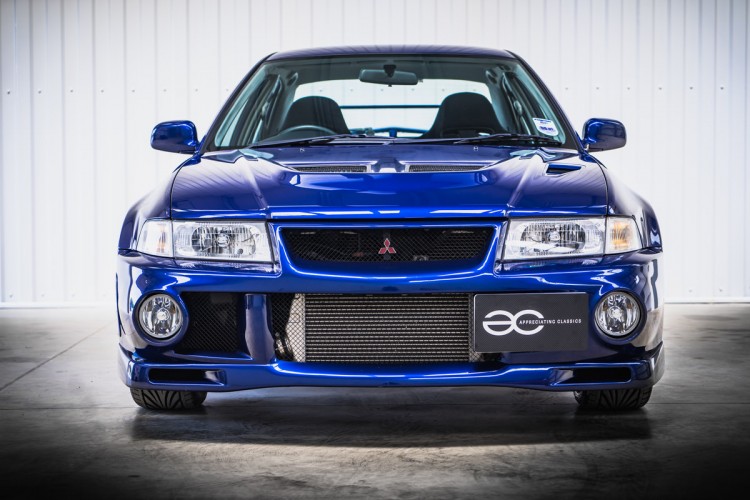Icon: The Mitsubishi Lancer Evolution VI

Legendary Mitsubishi Lancer Evolution VI
The Mitsubishi Lancer Evolution VI (also known as the Evo VI or Lancer Evo 6) is the sixth generation of Mitsubishi's iconic high-performance all-wheel drive sports sedan. First introduced in January 1999, it builds on the strong rally heritage of the previous Evolution models, having been developed from the company's successful World Rally Championship race cars.
| Component | Description |
|---|---|
| Engine | Turbocharger upgrades, larger intercoolers, intake and exhaust systems, engine management software, and internal components to handle more power. Can increase output to over 400 hp (298 kW). |
| Transmission | Upgraded clutches and limited-slip differentials for the 5-speed manual. Smoother, quicker shifting with increased durability. |
| Brakes | Larger 6-piston calipers and 356 mm (14 in) rotors for shorter stopping distances. More brake fluid capacity and cooling. |
| Suspension | Lower ride heights via coilover kits with adjustable dampers. Wider track widths with more aggressive alignment settings. |
| Wheels & Tires | Sticky high-performance tires measuring 245 mm (9.6 in) wide or wider. Lightweight 18-inch forged alloy wheels in wider widths. |
| Aero | Front lips, side skirts, and adjustable rear wings that generate meaningful downforce while enhancing style. |
The Evo VI features aggressive and aerodynamic exterior styling with a distinctive front bumper design that aids engine cooling. Under the hood lies a high-revving 2.0 liter 4G63T turbocharged engine producing 276 horsepower and 275 lb-ft torque, mated to a close-ratio 5-speed manual transmission. Further performance upgrades over previous models include larger Brembo brakes, quicker steering, and an advanced all-wheel drive system with Active Yaw Control for tenacious grip and handling.
Regarded by enthusiasts as the purest and most driver-focused Evo ever made, the Lancer Evolution VI has carved an enduring legacy as one of the greatest sports compacts and giant-slaying track weapons of its era. Its rally-bred performance and capabilities inspired a generation of motorsports fans and tuners worldwide.
High-Performance Engine and Drivetrain Specs
The Lancer Evolution VI features a powerful 2.0-liter 4G63T turbocharged inline-4 engine producing 206 kW (276 hp) at 6,500 rpm and 373 Nm (275 lb-ft) of torque at 3,000 rpm. This high-revving engine redlines at 7,000 rpm and utilises an advanced Mitsubishi Innovative Valve timing Electronic Control (MIVEC) variable valve timing system for optimised power delivery.

Power is sent through a close-ratio 5-speed manual transmission and active center differential to an advanced full-time all-wheel drive system. The Evo VI employs an Active Yaw Control (AYC) system that utilises a computer and sensors to actively distribute torque between the front and rear axles for incredible grip and handling.
Stopping power comes from ventilated Brembo disc brakes measuring 322 mm (12.7 in) front and 302 mm (11.9 in) rear. The braking system provides strong and consistent stopping power even during repeated hard use.
With its rally-bred drivetrain and advanced handling systems, the Lancer Evolution VI delivers incredible on-road performance with traction and control to spare.
Rally Heritage and Aggressive Styling of the Legendary Evo VI
The Lancer Evolution VI was launched in January 1999 as the sixth generation of Mitsubishi's high-performance sedan built for World Rally Championship competition. It continues the rally pedigree established by previous Evo models that dominated rally events worldwide.
The Evo VI features an aggressive exterior design with a large front bumper opening, vented hood, and rear wing spoiler. These aerodynamic enhancements aid engine cooling and high-speed stability just as on the race-spec Lancer WRC cars.
Underneath lies a high-output 2.0L 4G63T turbocharged engine paired with an advanced all-wheel drive powertrain and race-tuned suspension. Further performance upgrades over the Evo V include larger Brembo brakes and quicker steering for tenacious grip and nimble handling.

The stripped-down interior focuses purely on the driver experience, with amenities like power windows deleted in favor of a race-inspired cockpit. This track-ready ethos established the Evo VI's enduring legacy as a giant slayer ready to humble exotic supercars. Its motorsports spirit continues to inspire tuning enthusiasts worldwide.
Customising the Legendary Evo VI with Popular Upgrades
The Lancer Evolution VI is a tremendously capable performance sedan right out of the box, but one aspect that makes the Evo so iconic is its immense potential for tuning and customisation. Here are some of the most popular modifications:
- Engine - Turbocharger upgrades, larger intercoolers, intake and exhaust systems, engine management software, and internal components to handle more power. Can increase output to over 400 hp (298 kW).
- Transmission - Upgraded clutches and limited-slip differentials for the 5-speed manual. Smoother, quicker shifting with increased durability.
- Brakes - Larger 6-piston calipers and 356 mm (14 in) rotors for shorter stopping distances. More brake fluid capacity and cooling.
- Suspension - Lower ride heights via coilover kits with adjustable dampers. Wider track widths with more aggressive alignment settings.
- Wheels & Tires - Sticky high-performance tires measuring 245 mm (9.6 in) wide or wider. Lightweight 18-inch forged alloy wheels in wider widths.
- Aero - Front lips, side skirts, and adjustable rear wings that generate meaningful downforce while enhancing style.
With these common upgrades and professional tuning, the Lancer Evolution VI can readily achieve sub-4 second 0-60 mph (0-97 km/h) times and over 1.0 G of lateral grip for incredible performance potential.
How the Evo VI Shaped Performance Car History
The Mitsubishi Lancer Evolution VI left behind an enduring legacy as one of the most iconic high-performance sedans ever created. It represented the pinnacle of Mitsubishi's success in World Rally Championship competition, cementing the Evo series as a dominant force in motorsports.
With its rally-bred all-wheel drive powertrain and advanced handling capabilities, the Evo VI began humbling exotic supercars on road and track. It quickly gained renown as a giant slayer able to keep pace with the likes of Ferraris and Lamborghinis despite its modest price tag. This track-ready sports sedan offered everyday usability paired with capabilities on par with dedicated sports cars.
The Evo VI inspired a generation of loyal enthusiasts to push the limits through tuning and modification. An immense aftermarket industry blossomed offering custom turbochargers, suspension, brakes, and aerodynamics to extract more performance. Today the Evo VI is considered a cornerstone model that defined the possibilities of the sports compact segment.
Its rallycross dominance and motorsports pedigree sparked further innovation in integrating racing technology into production cars. The Evo VI wrote the playbook for building accessible, mass-produced sports sedans with few compromises, a formula that manufactures still follow today across segments. Its lasting influence continues to shape the automotive landscape.
Comments
No posts found










